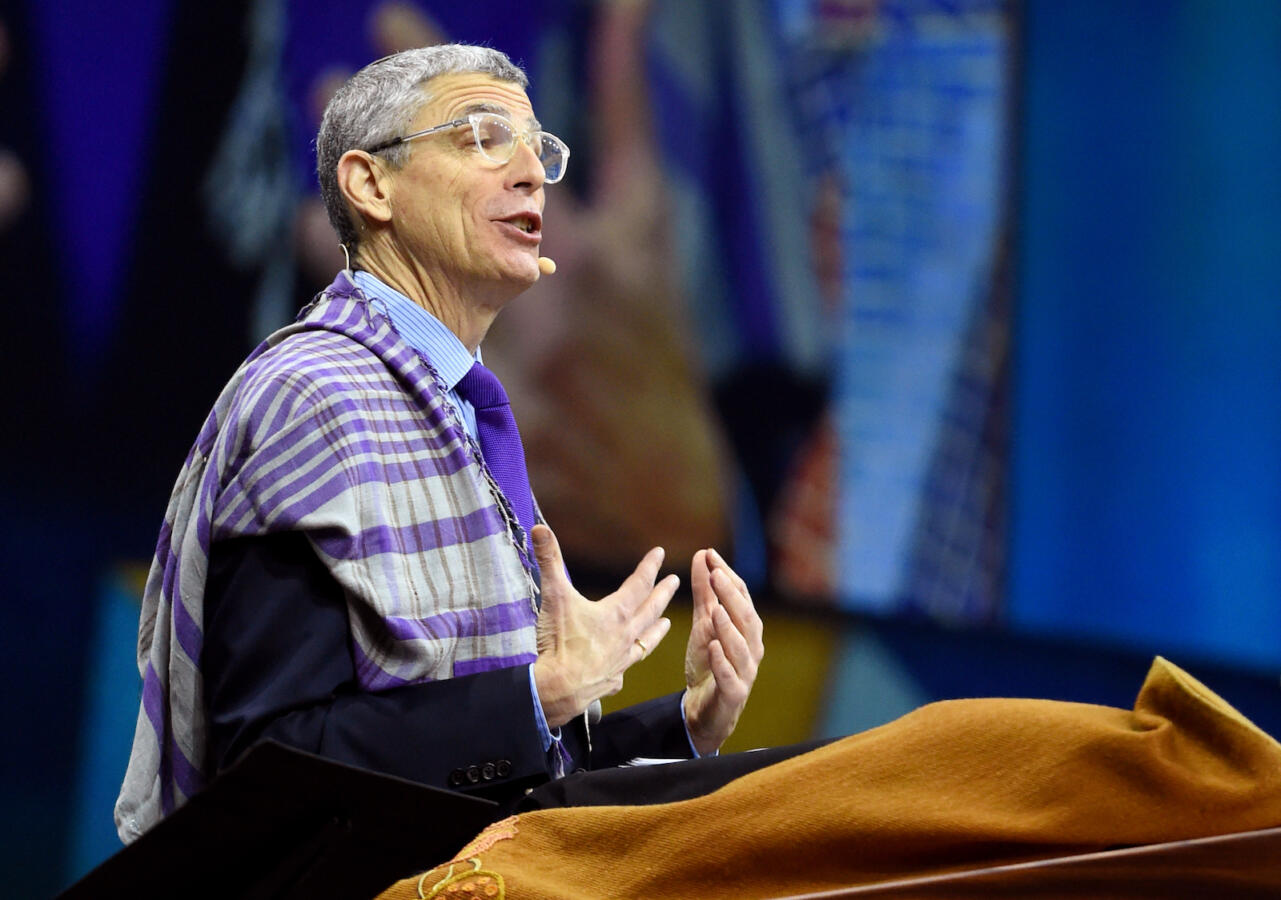After services one Shabbat morning, someone complimented my tallit and asked where they could get one like it.
“Well, you can’t,” I answered. “I bought it in a refugee camp in Africa while spending time with survivors of the genocide in Darfur in October 2005.”
They weren’t actually selling tallitot in an African refugee camp, but as we were leaving, I purchased a bright purple, gray and silver cloth, knowing I wanted to make a tallit to remind me of the plight of our Darfurian siblings. When I returned home, my daughter Sarah and I tied tzitzit onto the four corners. Ever since, I have worn this unique tallit as a reminder of our obligation to bring the four comers of the Earth together in our hearts and deeds.
The commandment of putting ritual fringes on the four corners of garments is found in this week’s Torah portion, Sh’lach L’cha. There we read: “Speak to the Israelite people and instruct them to make for themselves fringes on the corners of their garments throughout the ages.”

Help us keep Jewish knowledge accessible to millions of people around the world.
Your donation to My Jewish Learning fuels endless journeys of Jewish discovery. With your help, My Jewish Learning can continue to provide nonstop opportunities for learning, connection and growth.
This passage is also found in the traditional liturgy as the third paragraph of the Shema, though it has not been included in most Reform Jewish prayerbooks since the 19th century. This omission was because the early reformers did not find meaning in outward symbols of religiosity, though today it is commonplace to see people wearing tallitot in Reform prayer spaces.
The verses that follow tell us that the purpose of wearing tzitzit is to remind us to observe all 613 commandments and conclude with yet another reminder to never forget that God delivered us from slavery in Egypt: “Thus, you shall be reminded to observe all My commandments and to be holy to your God. I, the Eternal am your God, who brought you out of the land of Egypt to be your God: I, the Eternal am your God.”
We all need reminders about what matters most in our lives, which is why my Darfur tallit serves as a constant goad to my moral conscience. Each morning before reciting the Shema, I take a moment to think about people that I should include in my prayers. In recent weeks, I’ve taken hold of the fringes with the people of Ukraine in mind. Just before Shavuot, it was the images of our Ethiopian siblings arriving in Israel after fleeing a civil war. For many years, I’ve held a fringe for the Rohingya Muslims enduring genocide in Myanmar. Taking time to remember those who normally live on the fringes of our awareness while affirming the oneness of creation is a powerful way to deepen our prayers by holding close those whose God-given dignity has been stripped from them.
In Judaism, living a spiritual life isn’t only about performing rituals or contemplating profound questions, but also finding tangible ways to take abstract commitments and make them real. Wearing a tallit is one way to help us embody commitments we are hoping to live out. It is also a powerful reminder that ritual is not an end, but rather a catalyst toward acts of healing and repair. Rabbi David Saperstein expresses it perfectly when he writes that “the thread of social justice is so authentically and intricately woven into the many-colored fabric we call Judaism that if you seek to pull that thread out, the entire fabric unravels, that the Judaism that results is distorted, is neutered, is rendered aimless.”
It can be difficult not only to remember events that happened millennia ago like the Exodus from Egypt, but also those events that should have seared themselves permanently into our souls. And yet, we tend to forget even things we experienced with our own eyes.
Just before I bought the cloth for my Darfur tallit, a young boy, no more than 3 years old, took my hand. For more than an hour, he wouldn’t let go as we walked silently through the camp. I began to imagine bringing him home with me. Back in New York, he could share a room with one of my three children. I could tuck him into bed each night knowing he would be safe and healthy. By the conclusion of our walk, I had resolved to adopt him. But after making some inquiries, I learned he had relatives in the camp. Aid workers told me he’d be better off staying in Africa. I reminded myself that the point of our being in the camp was to figure out ways to help all the people of Darfur — not just one.
Putting on my Darfur tallit, I am often jolted into awareness of the people and places that demand our responsibility. As I take my tzitzit into my hand, I think of so many I’ve never met but whose predicaments compel my moral action. I can still feel my little Darfuri friend’s hand in mine. If God and humanity are in fact echad, or one, then his life and millions of other lives are in our hands.
This article initially appeared in My Jewish Learning’s Shabbat newsletter Recharge on June 18, 2022. To sign up to receive Recharge each week in your inbox, click here.



